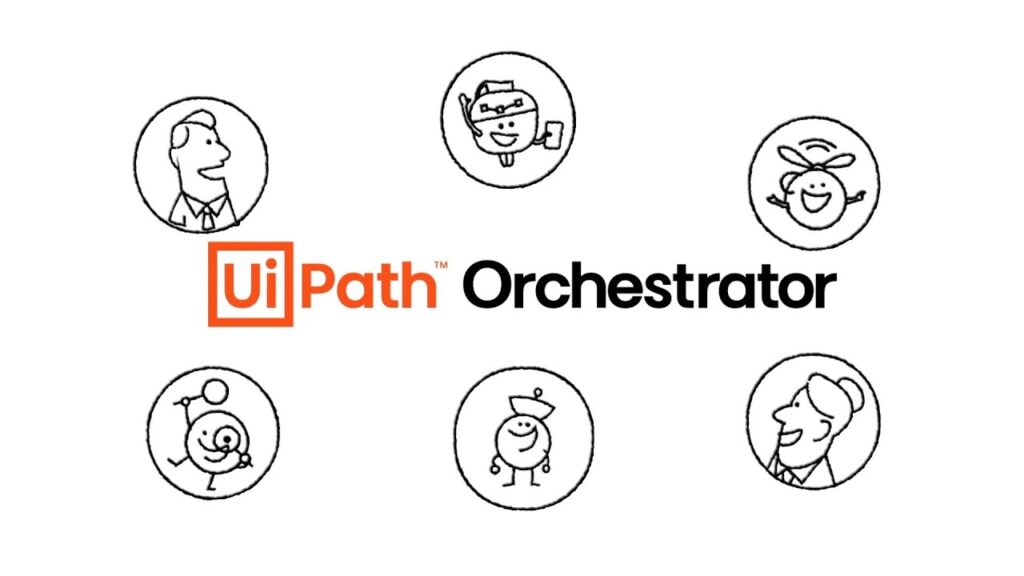Six Sigma Black Belt
Leading High-Impact change with confidence in an AI-Driven world
Unlock your potential as a transformative leader
You have proven your ability to spearhead successful process improvement initiatives and establish yourself as a skilled problem-solver. Now, a significant challenge arises: the opportunity to tackle complex, high-stakes projects that could reshape your organisation. How will you leverage AI technologies to seize this moment and leave a lasting legacy?
Why the Six Sigma Black Belt certification is essential for today’s leaders
In a competitive and diverse business environment, organisations require leaders who can drive large-scale, data-informed change. The Six Sigma Black Belt certification equips you with advanced tools and strategies to lead projects that optimise processes, reduce waste, and create sustainable success. By focusing on AI-enabled methodologies, you will enhance profitability, improve efficiency, and foster a culture of continuous improvement. Your role as a Black Belt will deliver outcomes that benefit all levels of the organisation—empowering diverse teams and cultivating an inclusive environment of excellence.
Challenges you will tackle
Strategic leadership: Guide large, diverse teams to achieve shared goals, ensuring that all voices are heard and integrated into the decision-making process through AI-enhanced communication tools. Advanced Data Analysis using AI: Apply sophisticated analytical techniques, including AI algorithms, to identify root causes and design solutions that promote fairness, efficiency, and long-term growth. Inclusive Change Management: Lead transformations that consider the needs of all stakeholders, using AI to reduce resistance and promote engagement across your organisation.
Become a master of inclusive, transformative leadership
Imagine leading complex, high-impact projects that streamline operations and contribute to an inclusive culture of excellence. By enrolling in the Six Sigma Black Belt course, you position yourself as a visionary leader capable of driving profound organisational change. Your ability to lead with a data-driven, AI-enhanced, inclusive approach distinguishes you as a true change-maker, inspiring others to follow your lead. The recognition, influence, and career advancement you gain will reflect your commitment to excellence and your capacity to create positive, lasting impacts.
Desired outcomes
Lead high-stakes projects: Become the go-to leader for organisation-wide initiatives that drive financial success and operational excellence, ensuring that improvements benefit everyone. Inspire inclusive leadership: Champion diversity, equity, and inclusion in every project, fostering a welcoming, collaborative environment for all team members. Accelerate career growth: Gain recognition as a strategic leader who delivers high-impact results, paving the way for continued career advancement and leadership opportunities.
1 - Introduction to Six Sigma Black Belt and AI integration
Understand how Six Sigma and Lean principles, combined with AI technologies, drive systemic change by aligning organisational goals with inclusive leadership practices.
2 - Advanced Define phase
Master the art of project selection by focusing on initiatives that leverage AI for better insights, ensuring that no group is overlooked and that the diverse customer base is actively considered.
3 - Soft Skills for Black Belts in an AI Landscape
Learn to lead with empathy, navigate team dynamics, and manage change through AI-driven insights that foster collaboration and inclusion across all organisational levels.
4 - Managing complex projects with AI tools
Tackling high-impact, cross-functional projects can feel daunting without advanced Black Belt expertise. Handling diverse stakeholder expectations, managing large datasets, and implementing strategic improvements across departments can be overwhelming. The Six Sigma Black Belt certification empowers you to confront these challenges with confidence, using data-driven decision-making powered by AI to ensure your solutions are effective, equitable, and sustainable.
Take the First Step Toward Transforming Your Team!
Our in-house training services are designed with your unique goals in mind. Here’s how we work together to create lasting impact:
Step One: Training Needs Assessment
We collaborate to understand your team’s challenges and goals, tailoring every aspect of the training to your needs.
Step Two: Custom Design and Development
We craft a curriculum based on your specific requirements, ensuring it’s both practical and relevant.
Step Three: Expert Delivery
Our experienced trainers engage your team, fostering real-world skills.
Step Four: Monitoring Effectiveness
Together, we evaluate the program’s impact to ensure lasting results.
What About Costs?
Before we assess your needs and design your course, we can’t provide an accurate fee. For example, a one-day workshop on communication skills may differ significantly in cost from a multi-week leadership development program with advanced role-playing exercises and follow-ups. Each program’s cost depends on its complexity, duration, and materials required.
What’s Next?
The first step is a Training Needs Assessment. This allows us to define the program and provide a detailed proposal tailored to your goals and budget.
📅 Click Below to Schedule Your Session Use our calendar to book your session and start building a training program that delivers real value for your team.
🚀 Schedule Your Assessment Now!

Questions must be Answered in the first stage of Need Assessment :
Any Questions?
So we can get to know you and your needs better
Here's What We Can Help With :
Run into a problem using Consuledge ? Check out our Policy for set-up guides and feature release notes.
- Contact our sales team to talk about your LMS requirements
- Get customer support
- Contact our partnerships team
- Answer any other questions you may have
- Contact our sales team to talk about your LMS requirements
- Get customer support
- Contact our partnerships team
- Answer any other questions you may have
FAQ
Is a Six Sigma Black Belt Certification a Competitive Advantage in Australia?
If you had asked me this a decade ago, I would have said a definitive yes. Today, however, the landscape has changed, and the term “Black Belt” is often diluted by what I call the “McDonaldization” of Six Sigma. Many claim to be Black Belts or even Master Black Belts without the rigorous training and experience that justify such titles. This trend has led to a crowded market filled with self-proclaimed experts, leaving employers struggling to discern who can deliver real results.
The True Value of Six Sigma Certification:
Prioritize Practical Skills Over Titles: Employers are increasingly looking for candidates who can deliver tangible improvements rather than simply holding certifications. My Six Sigma training program emphasises real-world problem-solving rather than rote memorization. With over 3,000 hours of Six Sigma training and 50+ successful projects, I equip you with hands-on experience that counts.
Learn from Real Stories: The most valuable insights often come from personal experiences. In my training, you’ll hear stories from my career, such as streamlining processes at Stockland and improving downtime metrics at Investa. These real-world scenarios offer insights that standard textbooks simply can’t match.
Make an Immediate Impact: This course prepares you to create immediate change in your organisation. Imagine walking into a chaotic process and transforming it into an efficient system within weeks. By the end of my program, you’ll have practical tools to implement effective solutions, demonstrating your value not just through a certificate but through real results.
Core Problems My Course Solves:
Cutting Through the Noise: In a market saturated with self-proclaimed experts, my course offers hands-on training that allows you to stand out. It’s about proving you can deliver results.
Building Confidence: My program empowers you to tackle real business challenges, enhancing your confidence as a project leader.
Driving organisational Value: Learn to implement solutions that align with business goals, positioning you as an invaluable asset to your company.
Enhancing Career Growth: Employers notice when you can solve long-standing issues, making you the go-to expert for high-impact initiatives.
Is Six Sigma Certification a Competitive Advantage?
It’s less about the certification itself and more about your ability to apply it effectively. My Six Sigma Black Belt course emphasises practical application over theory, preparing you to walk into your next project and make an immediate difference. In today’s job market, results matter more than titles.
Best Strategy for Licensing Minitab in organisations
Answer: When it comes to Minitab licensing, having the right strategy is essential—not just for cost management but also to ensure that the software is utilised by those who can truly harness its potential. At CIMIC, we implemented a strategic approach to licensing that maximised our Six Sigma projects while conserving resources.
My Minitab Licensing Strategy at CIMIC:
Train First, License Later: We didn’t rush to issue licenses to everyone. Initially, I trained selected individuals as Six Sigma Black Belts (SSBBs), ensuring that only skilled users received access to Minitab. After all, why give a powerful tool to someone without the knowledge to use it effectively?
Project-Driven License Assignment: Minitab licenses were assigned only to those ready to apply their skills to real projects. This focused approach ensured that software usage had clear, measurable outcomes, keeping our budget in check while driving tangible business improvements.
License Allocation: We assigned licenses strategically, ensuring Minitab was actively used as a tool for change rather than sitting idle. This approach helped us maximise our investment in both personnel and software.
Why This Approach Works:
Efficiency: Licenses are issued only to those equipped to use them effectively, minimizing waste and ensuring optimal resource allocation.
ROI on Training and Software: Aligning Minitab access with specific projects led to a direct correlation between software use and business improvements.
Controlled Usage: This strategy prevents Minitab from becoming just another tool that everyone wants but few know how to use correctly.
Core Problems this course solves:
Avoiding License Waste: My course teaches a strategic approach to licensing that ties investment directly to impactful Six Sigma projects.
Enhancing Project Success: Training individuals before granting software access ensures Minitab is used to Analyse data effectively and drive solutions.
Creating a Skilled Workforce: By ensuring that only qualified individuals have access to Minitab, we foster a more skilled and efficient team.
What’s the Best Licensing Strategy?
In summary, train first, assign projects second, and license third. Think of Minitab licenses as precious resources that should only be given to those who can utilise them effectively. This approach not only maximises your software investment but also ensures that it leads to meaningful improvements within your organisation.
The 1.5 Sigma Process Shift: Accurate Concept or Just Theoretical?
The 1.5 Sigma shift is a hotly debated topic among Six Sigma practitioners. While it forms a theoretical cornerstone of Six Sigma, its practical application can be more nuanced.
Why the 1.5 Sigma Shift is Theoretically Flawed:
Origin of the Concept: Introduced by Motorola engineers in the 1980s, the 1.5 Sigma shift accounts for long-term process variations. However, it assumes uniformity that doesn’t always exist across different processes and industries.
Real-World Applicability: Not all processes experience the same shift, leading to potential inaccuracies. Relying on this concept can set you up for overestimating process capability and unexpected failures.
Overemphasis in Training: Many Six Sigma training programs present the 1.5 Sigma shift as a universal truth, which can create misleading expectations for practitioners.
Why Understanding This Matters?
Accuracy in Analysis: Blindly applying the 1.5 Sigma shift can lead to poor decision-making. Understanding its limitations allows for more informed choices tailored to specific processes. Better Decision-Making: Instead of adhering to a one-size-fits-all approach, learn to assess processes on their unique merits, which can lead to more accurate improvements. How our course addresses this: Debunking Myths: My Six Sigma Black Belt course delves deep into the 1.5 Sigma shift, clarifying when to apply this concept and when to reconsider it. Real-World Examples: With my extensive experience, I share insights on how the 1.5 Sigma shift has played out across various industries, including instances where it led to more harm than good. Tailored Strategies: Every process is unique. My course emphasises a customised approach to process improvement, considering variables like industry and data quality. Core Problems My Course Solves: Avoiding Common Pitfalls: Equip yourself with the knowledge to avoid misconceptions surrounding the 1.5 Sigma shift and make informed decisions. Enhanced Process Understanding: Gain a deeper understanding of process behavior, enabling you to tackle complex challenges effectively. Improving Workplace Outcomes: Accurate application of Six Sigma principles adds value to your employer while positioning you as a critical asset for career advancement. Conclusion: The 1.5 Sigma process shift has its merits but isn’t the entire story. It’s a theoretical concept that doesn’t always hold true in practice. My course equips you with the tools to critically evaluate such concepts, empowering you to lead with insight and accuracy.
Australian Companies that Have Successfully Implemented Six Sigma Programs
Several Australian companies stand out for their successful implementation of Six Sigma, including Commonwealth Bank of Australia (CBA), NBN, and Westpac. Let’s explore their journeys and the lessons we can learn from them.
Commonwealth Bank of Australia (CBA):
Journey: CBA has been a leader in employing Six Sigma methodologies to streamline processes and enhance customer experience. They recognized that inefficiencies in the competitive banking sector could cost millions.
Results: By rigorously applying Six Sigma tools, CBA optimised their loan approval processes, significantly reducing cycle times and improving customer satisfaction.
Key Takeaway: It’s not just about cutting costs; it’s about delivering value through quality and consistency.
NBN (National Broadband Network):
Journey: The NBN project involved rolling out a nationwide broadband network, where Six Sigma was integral in minimizing inefficiencies and ensuring quality service.
Results: Through Six Sigma, NBN streamlined their deployment processes, reducing defects and enhancing resource management.
Key Takeaway: Six Sigma is applicable across various sectors, not just manufacturing or finance.
Westpac:
Journey: Westpac embedded Six Sigma into their culture, focusing on improving processes across departments.
Results: They achieved faster transaction processing and enhanced customer experiences through reduced process variations.
Key Takeaway: Six Sigma is a cultural shift that leads to sustained performance improvements.
Other Notable Success Stories:
Telstra: Implemented Six Sigma for improved customer service and network reliability.
Qantas: Streamlined maintenance operations using Six Sigma, enhancing safety and efficiency.
BHP: utilised Six Sigma in mining operations to optimise production processes.
Why These Success Stories Matter:
Career Advancement: If industry leaders find value in Six Sigma, mastering these methodologies will give you a competitive edge.
organisational Value: Implementing Six Sigma can transform you into a valuable asset in your company, enhancing your relevance and career prospects.
Driving Real Change: Companies
Get started today!
Transform your change management skills
Enroll in our comprehensive change management course to enhance your skills and drive effective organizational transformations. Learn how this training can help you navigate resistance to change, avoid common pitfalls, and lead sustainable change initiatives in your organization.
Courses you might be interested in

The Symbiosis of Human and AI: How the Internet of Bodies Is Becoming Our New Nervous System

UiPath Orchestrator Isn’t Failing You — IIS, SQL Server, Elasticsearch, or Kibana Might Be

Top 5 Key Components of Robotic Process Automation (RPA): Orchestrating Success in Finance





